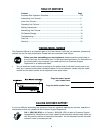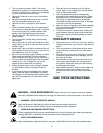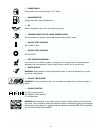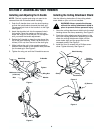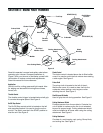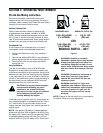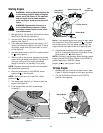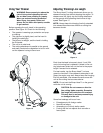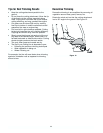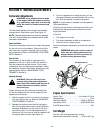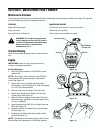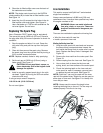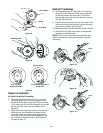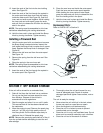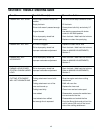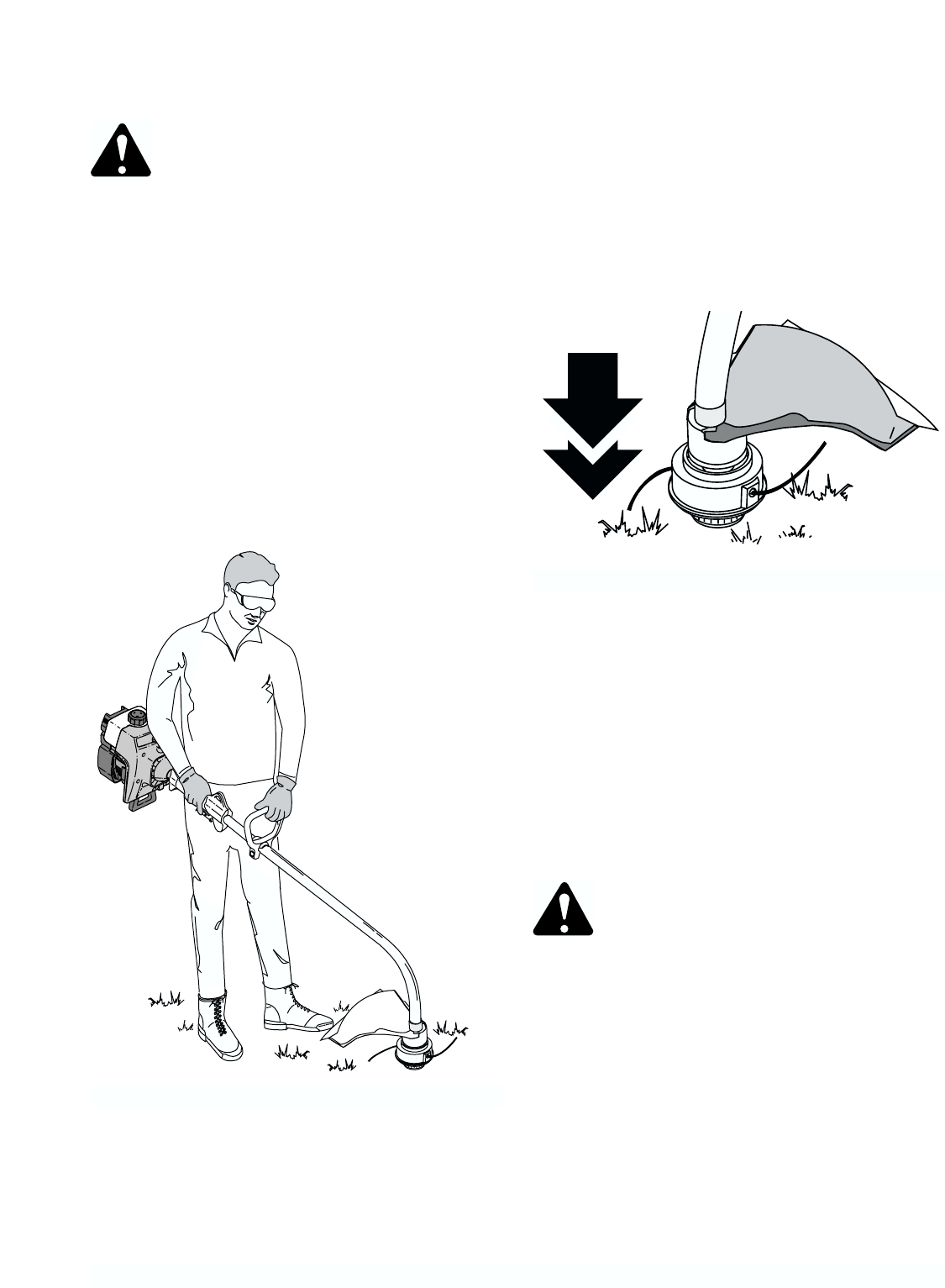
Each time the head is bumped, about 1 inch (25.4
mm) of trimming line is released. A blade in the cut-
ting attachment shield will cut the line to the proper
length if excess line is released.
For best results, tap the Bump Head™ on bare
ground or hard soil. If line release is attempted in tall
grass, the engine may stall. Always keep the trimming
line fully extended. Line release becomes more diffi-
cult as the cutting line becomes shorter.
NOTE: Do not rest the Bump Head™ on the ground
while the unit is running .
CAUTION: Do not remove or alter the
line cutting blade assembly. Excessive
line length will make the unit overheat.
This may lead to serious personal injury
or damage to the unit.
Some line breakage will occur from:
• Entanglement with foreign matter
• Normal line fatigue
• Attempting to cut thick, stalky weeds
• Forcing the line into objects such as walls or
fence posts
Adjusting Trimming Line Length
The Bump Head™ cutting attachment allows you to
release trimming line without stopping the engine. To
release more line, lightly tap the cutting attachment
on the ground while operating the trimmer at high
speed. See Figure 11.
NOTE: Always keep the trimming line fully extended.
Line release becomes more difficult as cutting line
becomes shorter
10
Figure 10
Using Your Trimmer
WARNING: Dress properly to reduce the
risk of injury when operating this unit.
Do not wear loose clothing or jewelry.
Wear eye and ear/hearing protection.
Wear heavy, long pants, boots and
gloves. Do not wear short pants, sandals
or go barefoot.
Before operating the unit, stand in the operating
position. See Figure 10. Check for the following:
• The operator is wearing eye protection and prop-
er clothing.
• The right arm is slightly bent, and the hand is
holding the shaft grip.
• The left arm is straight, and the hand is holding
the D-Handle.
• The unit is at waist level.
• The cutting attachment is parallel to the ground
and easily contacts the vegetation to be cut with-
out the operator having to bend over.
Figure 11



